#NBIoT
Explore tagged Tumblr posts
Text
📡 Flexible Nb-IoT/LORA Antenna – 90% OFF! Wireless Data Transmission Module!
Enhance your wireless projects with the Flexible Nb-IoT/LORA Antenna. This SMA Male module is perfect for data transmission and works seamlessly with UAV systems and other wireless applications. Designed for long-range communication, this antenna supports Nb-IoT and LORA networks for reliable connectivity. Whether you're working on IoT devices, drones, or other wireless systems, this antenna provides the performance you need.
🛒 Price Now: USD 0.99 (Original price: USD 10.07, 90% OFF!) 🔗 Click & Buy Now: Shop Here!
Take your wireless communication projects to the next level with this high-performance antenna!
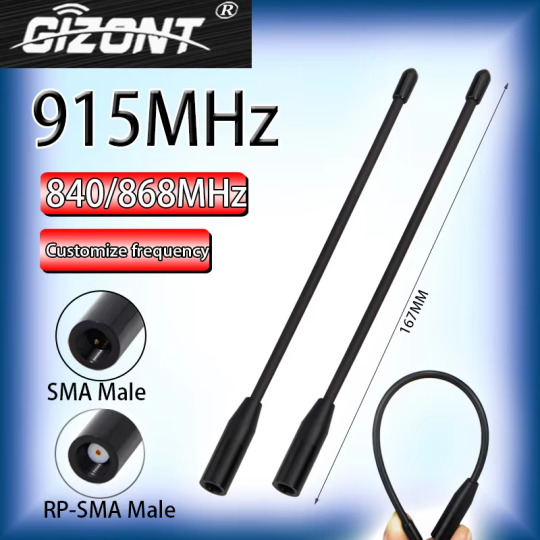
#WirelessModule#NbIoT#LORA#UAVModule#DataTransmission#Antenna#SMAConnector#WirelessCommunication#TechParts#IoTDevices#DroneParts#LongRangeAntenna#AntennaSale#TechDeals#ElectronicsAccessories#AliExpressDeals#DiscountShopping#WirelessTech#AntennaTech#IoTComponents#TechProjects
0 notes
Text
Understanding NB-IoT and Its Key Benefits and How It Operates
This blog offers a clear look at NB-IoT, explaining what it is, its benefits, and how it works. NB-IoT is helping businesses improve connectivity in low-power networks, making it a great choice for areas like energy management and smart cities. Whether you're new to this technology or want to upgrade your IoT setup, this blog provides useful information. To get expert help with IoT integration, check out our IOT app development services at Shiv Technolabs and keep up with the latest in IoT advancements.
0 notes
Text

The 5G IoT Market size is forecast to reach $40.5 billion by 2026, growing at a CAGR 61% from 2022 to 2026.
#5GIoT#IoT#5G#Industry40#SmartCities#ConnectedDevices#DigitalTransformation#IIoT#AIoT#LoRaWAN#NBIoT#LPWAN
0 notes
Text
¿En qué rubros se puede utilizar NB IoT?
La tecnología de comunicación inalámbrica Narrowband (NB IoT) se ha convertido en el gran habilitador de aplicaciones de Internet de las Cosas. Pese a proporcionar un ancho de banda más estrecho que otras redes, ofrece una amplia cobertura, mejora significativamente el consumo de energía de los dispositivos y puede integrarse en cualquier tipo de empresa, pues tiene todo un universo de…

View On WordPress
0 notes
Text
The Role of Advanced Metering Infrastructure in Smart Cities: Building Efficient Urban Infrastructure
The growth of smart cities is greatly aided by advanced metering infrastructure (AMI), which is altering the way utilities manage resources and improving urban dwellers' quality of life. AMI is at the forefront of developing effective and sustainable urban infrastructure by integrating technologies like prepaid meters and Narrowband Internet of Things (NBIoT) connection.
1. The Smart City Vision:
Smart cities stand out for their dedication to sustainability, efficiency, and a higher standard of living. To improve services and optimize resource allocation, they make use of cutting-edge technologies.
2. AMI at the Core:
Utility management in smart cities is supported by AMI. With never-before-seen accuracy, it enables utilities to monitor and manage resources like power, water, and gas.
3. Efficient Resource Management:
Prepaid metering, a feature of AMI, gives customers the ability to keep track of and manage their electric usage. It promotes responsible consumption, lowers waste, and increases resource effectiveness.
4. Real-Time Data Collection:
The seamless transfer of data between meters and utility providers is made possible via NBIoT connection. Real-time data collecting enables effective grid management and proactive problem-solving.
5. Energy Conservation:
Customers now have access to comprehensive data about their energy usage thanks to AMI. This information encourages energy-saving techniques, lowering the city's overall carbon footprint.
6. Improved Service Delivery:
Accurate billing and quicker response times are made possible through AMI. Utility companies have the ability to quickly identify and resolve problems, improving service delivery and customer happiness.
7. Smart Grid Integration:
Smart grids, which are closely related to AMI, allow for the two-way exchange of information and energy. Distributed energy supplies, a resilient grid, and effective load management are all made possible by this combination.
8. Water Management:
AMI extends its advantages to water management, assisting communities in finding leaks, cutting down on water waste, and ensuring inhabitants have a reliable supply of water.
Conclusion
A key component of smart cities' attempts to develop effective and sustainable urban infrastructure is the integration of prepaid metering and NBIOT communication in advanced metering infrastructure. AMI makes a substantial contribution to the implementation of the smart city concept by optimizing resource management, enhancing service delivery, and minimizing environmental impact. AMI continues to play a crucial part in forming the cities of the future, where sustainability and efficiency go hand in hand, thanks to continual breakthroughs and innovations.
0 notes
Text
Head End System For Power, Water, and Gas Utilities
UGO Head End System (HES) operates on a secure cloud-based server. It is developed to offer secure and quality-based solutions in a cost-effective way. UGO HES is capable of communicating via numerous channels such as 2G, 3G, 4G, NBIoT, RF, etc.
For More Info: https://www.inventia.in/head-end-system

1 note
·
View note
Text
WHAT IS LPWAN- LOW POWER WIDE AREA NETWORK?
LPWAN is a communication method between linked devices that was founded and developed by Sigfox. The fundamental advantage of LPWAN is that it permits low-bit-rate communication among devices dispersed across a large geographical area.
LPWAN refers to a set of communication technologies (Sub 1GHz, NB-IoT, LTE CAT M, ZIGBEE) used to link devices, sensors, actuators, controllers, and so on. The goal of creating a low power wide area network is to create a communication channel for the Internet of Things network that uses less power and has a lower data rate.
LPWAN TYPES

RF SUB-1 GHZ
Sub-1 GHz RF, as the name implies, operates at low-frequency ranges less than 1 GHz. It operates in the ISM band, which has a frequency range of less than one gigahertz. This technology is mostly relevant for RF IoT applications. Some of its advantages are as follows:
Sub-1 GHz RF has a greater range while using the same output power. Because of its vast range, it can go more than 100 kilometres.
Power usage is quite low.
Ability to deal with interference more effectively.
NB-IOT
NBIoT, or Narrowband IoT LTE, is a self-contained LPWAN technology. It enables the mass deployment of IoT devices. NB-IoT is often used to transport data at a low frequency. When a message is sent via NB-IoT, it consumes very little bandwidth. Among the advantages of NB-IoT are:
It uses less energy.
Cost-efficient.
It is safe to use.
Devices can be deployed in bulk.
Excellent choice for embedded sensors.
CAT-M1 OR LTE-M?
CAT M is another LPWAN technology that operates on 1.4 MHz of bandwidth. It enables higher total data rates, more location accuracy, and shorter latency. It allows voice calls and mobility mode. CAT M has the following advantages:
The maximum data rate is 375kbps.
VoLTE functionality is supported.
There is complete mobility assistance provided.
LTE in-band mode of operation
ZIGBEE
The IEEE 802.15.4 standard is used to operate ZIGBEE networks. It’s appropriate for high-level communication protocols. It is primarily intended for small-scale IoT projects for personal use, such as home automation, where wireless communication is required. ZIGBEE has the following advantages:
It supports several network topologies.
Battery life is extended.
Spectrum of direct sequence spread
Latency is low.
LORAWAN
LoRaWAN is a well-known worldwide standard for LPWAN networks based on LoRa technology. The LoRaWAN standard for low-power wireless networks was created to link devices that run on batteries. LoRaWAN allows for highly seamless information transfer over the internet between smart devices without the need for complicated installations. Some of the advantages of LoRaWAN include:
The device linked to the LoRaWAN network may send data from a distance of 1 km to 10 km.
Because AES128 is used between network servers and end nodes, it enables high-security data encryption.
A single Lora Gateway may connect thousands of devices.
Because of the adjustable data rates, it consumes less bandwidth.
LoRaWAN’s basic architecture makes it simple to deploy.
LPWAN BENEFITS
The following are the advantages of LPWAN technology:
Less power consumption: LPWAN operates at extremely low power consumption.
Long-distance transmission: LPWAN permits device connectivity across distances of up to 20 kilometres.
Long battery life: Because LPWAN requires less power, the gadget battery may last for more than ten years.
Reduced Gateways: Because LPWAN permits device connectivity over greater distances, fewer gateways are needed for communication.
CONCLUSION
LPWAN technology is a remarkable technology that is revolutionising the way IoT devices communicate. If you have a project that requires LPWAN technology, PsiBorg an IoT solutions development company can assist you. We are a group of skilled developers with extensive expertise integrating multiple LPWAN technologies. Please contact us immediately for further information.
This article was originally published here: LPWAN- LOW POWER WIDE AREA NETWORK
1 note
·
View note
Text
How does Edge Computing effect IoT Gateway devices?

Instead of sending all raw data to the cloud, the gateway uses edge computing to analyze data on-site. Due to the volume of real-time data from multiple sensor arrays, one of the important functions of a cohesive system is to know what data points are important. And, conversely, what elements of the data stream do not need to be collated and analyzed.
0 notes
Photo

Зачем нужен умный счетчик?
Проблемы с учетом и оплатой электроэнергии существуют с тех самых времен, когда системы электроснабжения еще только начали внедряться. Естественно, что в таком вопросе, причем напрямую связанном с деньгами, никто не хочет быть обманутым. С тех пор много воды утекло и многое изменилось. Поможет ли массовая установка интеллектуальных счетчиков реш��ть все проблемы, или это очередная пустышка? Давайте всесторонне рассмотрим, что изменилось за последние пару лет в сфере учета электроэнергии. https://www.elec.ru/publications/peredacha-raspredelenie-i-nakoplenie-elektroenergi/7347/
0 notes
Link
1 note
·
View note
Video
tumblr
Cellular (NB-IoT/ 5G) and Multi-Constellation GNSS IP core available for IoT applications. For further information on licensing options & pricing please visit on: https://t-2-m.com/
1 note
·
View note
Text
Announcing LTE Beacon for asset tracking
At Estimote we believe apps of the future won’t be downloaded to phones, computers or tablets. Developers of tomorrow will use the physical world as their canvas. Precise location of people and objects will be accessed programmatically and apps will be “installed” on places.
To make this happen we are working on an Operating System for the physical world: a software environment where developers will be able to quickly build apps for one location and run the same experience on many.
Our first product, Estimote Bluetooth Beacons launched in 2013, enabled us to locate people and their phones inside buildings. To do that, we used Bluetooth Low Energy (BLE), an emerging technology at the time. Our iconic design, easy-to-use software and simple APIs made them the most popular beacons for developers. Since then, more than 150,000 innovators, startups, agencies, and Fortune 500 companies have used them to create context-aware apps. They’ve built mobile solutions to increase workplace productivity, comply with safety regulations, and deliver other magical experiences at scale, something that simply can’t be accomplished without accurate microlocation.
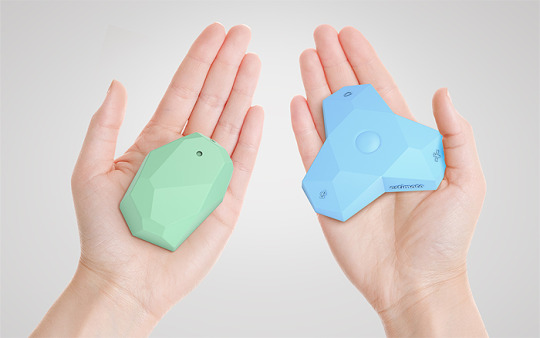
New product from Estimote
Today we are proud to announce another revolutionary IoT device. Once again, we chose to leverage emerging IoT technologies (LTE M1 and NB-IoT) and have designed and productized a new device we call the “Estimote LTE Beacon.”

It’s a small, wireless beacon that can compute both its precise indoor and outdoor position. It can talk directly to the cloud and last multiple years on a battery.
Estimote LTE Beacons are designed primarily to seamlessly locate assets and vehicles when they move between indoor and outdoor environments. Their secure firmware/cloud software is crafted to provide true “proof of location” and “proof of delivery.”

Since the device is fully programmable using JavaScript, it can also support other creative use-cases — for example, it can act as a remotely managed iBeacon or a gateway used to configure other Bluetooth beacons.
Smartphone without a screen
The best way to think of this new IoT device is to imagine it as a small smartphone, but without a screen. It can last years between charges and the cost is similar to a beacon. It has cellular LTE connectivity, built-in GPS, and Bluetooth radio. And it is also possible to create and download apps that run on the LTE beacon.
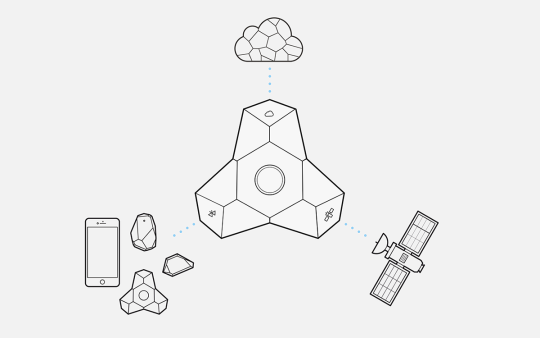
LTE Beacon specification
To create this new device from Estimote we have integrated the best Internet of Things components, designing the most robust beacon the industry has ever seen. Below, you can find the full specification and tech details of the radio and other IoT components we have used.

PROCESSOR AND MEMORY
It has a low-power 32-bit ARM Cortex-M4 CPU with floating point unit (FPU) running at 64 MHz. There is 1MB flash with cache onboard and 256KB RAM supporting over-the-air (OTA) firmware updates. There is an additional ARM CryptoCell co-processor with a full AES 128-bit suite as well as a true random number generator for full entropy and asymmetric/symmetric hashing cryptographic services.
BLUETOOTH RADIO
We have integrated one of the newest 2.4 GHz radios. It fully supports the latest Bluetooth 5.0 standard including mesh networking, long range, and high data throughput. The radio could also support 802.15.4-based protocols such as Thread and ANT. There is an additional amplifier (+20 dB) for extended range of packet advertising (200m).
SATELLITE POSITIONING
The device has a low-power satellite signal receiver supporting American GPS, European Galileo, Russian GLONASS, Chinese BeiDou, and Japanese QZSS. It uses multi-constellation algorithms for fast and accurate fixes using all visible satellites.
LTE CONNECTIVITY
Cloud connectivity is possible using a low-power LTE IoT modem equipped with an ARM Cortex A7 (1.3 GHz) and supporting 5G-ready protocols such as LTE Cat-M1 and Cat-NB1. The peak data upload speed to the cloud is 375 KBps for LTE-M and 60 KBps for NB-IoT. The modem supports eDRX and PSM sleep cycles to reduce power consumption while enabling cloud-invoked communication with the device. The modem and the antenna support 15 bands (B1/B2/B3/B4/B5/B8/B12/B13/B18/B19/B20/B26/B28/B39) that cover virtually the entire world.
OTHER COMPONENTS
Lithium-Ion rechargeable battery lasting 2 years on default settings
USB-C compatible with USB 2.0 for fast charging
NFC-A programmable tag supporting NFC Type 2 and Type 4
3-axis accelerometer
Programmable push button for specific use-cases such as alerts
Programmable RGB LEDs
Temperature sensor
Integrated ultra-strong adhesive layer
Mounting hole for industrial deployments
Durable, non-toxic silicone enclosure
How does the LTE Beacon work?
This LTE-M device can be attached to an asset, e.g. a jet engine manufactured in a factory. When it moves across the production line, the LTE Beacon scans for Bluetooth beacons installed in the factory and reports its precise indoor location to the cloud. When loaded into a truck, it continues to report its outdoor position using satellite systems. It can also report key telemetry data such as temperature, vibration, and battery status.

When the jet engine arrives at a warehouse, it switches back to beacon-tracking for precise indoor positioning. And finally, when the product gets shipped to the end-customer it can automatically report a secure “proof of delivery” signal.
The above use case is just one example of how the LTE Beacon can be programmed to work. We have designed an entirely new way of adapting the device to support many Internet of Things applications.
Programmable beacon and micro apps
Our previous generation of beacons had really only one “app” installed—our embedded firmware. It exposed some of the settings such as range, compatible packets (iBeacon or Eddystone) or other parameters. But it wasn’t possible for our customers to “upload” their own software into the device.
The new Estimote LTE Beacon is different. We created a Web IDE in Estimote Cloud where you can program it using JavaScript. We’re exposing a bunch of APIs for you to use in the process: BLE scanning & advertising, sending & receiving data via LTE-M to/from Estimote Cloud, obtaining GPS coordinates, reading from on-device sensors, responding to the button press, etc.
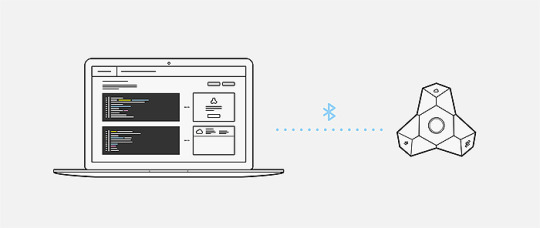
When you’re done, Estimote Cloud will compile the code into a “micro-app,” and send the bytecode to the LTE beacon, where it starts being executed.
For example, if we want to program the LTE Beacon to use its Bluetooth radio to advertise both iBeacon and Eddystone at the same time, we can upload the micro app code below.
// Define your iBeacon packet var iBeaconPacket = ble.build.iBeacon('DE4E12E7-7E0F-4A6B-A4DD-AA837507FB20', 2000, 18); // Define your Eddystone-URL packet var EddystonePacket = ble.build.eddystoneURL('https://estimote.com'); // Start Bluetooth LE advertising ble.advertise(iBeaconPacket); ble.advertise(EddystonePacket).interval(500).power(4); ` ` Here is another example. This one will detect if the central button on the device was pressed, read the GPS <pre>` function sendPosition() { var { latitude, longitude } = location.getLastPosition(); cloud.enqueue('position-update', { lat: latitude, lon: longitude }); } io.press(io.button.MAIN, sendPosition); `</pre> ### Lambda expressions To accelerate the back-end prototyping and enable developers to quickly process the data received from the LTE device, we have also added an element of serverless architecture.  In addition to the micro app code, you can write another JavaScript snippet—this time, a function that sits in Estimote Cloud, and processes the data received from the LTE beacon. For example, if you want to create a “panic button” application which uses Twilio to send a text message whenever the button is pressed on the LTE-M device, here is an example micro app code and additional lambda expression. <pre>``io.press(io.button.MAIN, () =>; { // send an 'alert' event to Estimote Cloud cloud.enqueue('alert'); }); // Your Account Sid and Auth Token from twilio.com/console const accountSid = '…'; const authToken = '…'; const twilio = require('twilio')(accountSid, authToken); module.exports = async function(message) { // respond to the 'alert' event if (message.type === 'alert') { await twilio.messages.create({ body: 'There's been an alert…', to: '+1…', from: '+1…', }); } };
Of course our new product can be also programmed to send requests to user defined end-points in their own cloud enviroment.
IoT app templates
We call a pair of these two JavaScript snippets an “IoT Application,” and we have prepared a few templates you can choose from when adding a new IoT App in Estimote Cloud. With these templates, it will be possible to quickly turn the device into a GPS tracker, a cloud beacon, or a location-aware panic button.

There will be a separate blogpost on how the LTE Beacon can be programmed, so you can learn more about the entire process there. Stay tuned!
LTE-M device battery life
Since this LTE Beacon is fully programmable, battery life will depend on the micro app, the intensity of the radio usage, and also the external environment such as distance to base stations, type of connection (LTE Cat M1 or Narrowband IoT) and visibility of satellites.
For example, if we program the device to act as a GPS tracker and do nothing else other than send GPS coordinates to the cloud once a day, it will last approximately 2 years. However, if we want to get real-time position of an asset and receive GPS updates every few seconds, the device will last a few days at most.
The rule of thumb is that:
Bluetooth advertising (iBeacon/Eddystone) consumes the least power
Scanning for Bluetooth devices consumes significantly more energy
Processing satellite signals is even more power-hungry
And finally scanning and sending data over the LTE-M and Narrowband networks drains the battery the most. Note that it is still a fraction of the energy needed for cloud communication using classic voice or data sent over 3G
As part of our Cloud-based IDE, we are working on a battery usage profiler, so we will be able to help developers predict the battery consumption of their apps.
Estimote LTE Beacon also has a USB-C port and a rechargeable battery built-in, so it can be powered or recharged when necessary for applications that require a constant cloud connection or GPS/Bluetooth scanning.
Pricing and availability
We are shipping LTE Beacons as Developer Kits. Each box will include two devices and the total cost will be $129 + shipping. We can ship anywhere in the world.
Since the LTE Beacons have active data plans and talk to the LTE networks of our telecommunication partners as well as use our cloud services, there will be an additional subscription fee. For the beacons in the dev kit, it will be $2 per device per month, and the first 3 months are free. The devices can be still used and programmed without an active subscription, but the cloud connectivity won’t be possible.
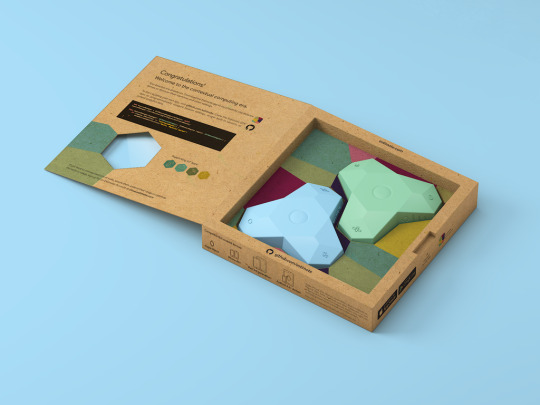
PoC and Pilots
If you also need assistance building your first IoT apps using our Web IDE and APIs we are always more than happy to help. Shoot us a note at:

3 notes
·
View notes
Photo

Welcome to my team if you're expert in: Ai, Blockchain, Fintech, GreenTech, NB-IoT, Robotic, and etc. Chat with me at [email protected] or Telegram @CorwinGroup 欢迎来到我的团队,如果你是专家:人工智能,区块链,金融科技,绿色科技 窄带物联网(Narrow Band Internet of Things, NB-IoT),机器人等等。通过[email protected] 联系我或Telegram @CorwinGroup 与我聊聊 #lookingforcofounders #partnership #alliance #结盟 #Ai #Blockchain #Fintech #NBIoT #Robotic #招聘 #全职高手 #兼职 #人工智能 #区块链 #金融科技 #绿色科技 #窄带物联网#NarrowBandInternetofThings https://www.instagram.com/p/Bx7s3w4ARPQ/?igshid=11qheq57butxs
#lookingforcofounders#partnership#alliance#结盟#ai#blockchain#fintech#nbiot#robotic#招聘#全职高手#兼职#人工智能#区块链#金融科技#绿色科技#窄带物联网#narrowbandinternetofthings
0 notes
Text
T-Mobile launches its Narrowband Internet of Things (NB-IoT) service in the US

- By Nuadox Crew -
On July 19, wireless carrier T-Mobile launched its Narrowband Internet of Things (NB-IoT) service in the US. T-Mobile is the first to launch NB-IoT in the United States and first in the world to launch NB-IoT in the guard bands for increased efficiency. The company also announced a new partner program, T-Mobile CONNECT, to help IoT solution providers collaborate and bring their products and services to market on T-Mobile’s network (and ultimately into the hands of customers).
“We’re always innovating to bring customers the latest technology, and NB-IoT is the globally-preferred standard to power the rapidly expanding world of IoT applications,” said Neville Ray, Chief Technology Officer at T-Mobile. “So of course, T-Mobile is the first to bring NB-IoT to the U.S., lighting up new capabilities to connect massive numbers of devices at low cost.”
Built on the 3GPP standard, NB-IoT is a low power, wide area network (LPWAN) LTE-Advanced technology that provides a pathway to 5G IoT and offers many comparable benefits like low power usage, long battery life and low device cost. T-Mobile was also first to trial NB-IoT in the U.S. last year.
By lighting up NB-IoT in the guard bands – the network equivalent of driving down the shoulders on the highway – T-Mobile can utilize precious spectrum resources most efficiently, and IoT applications don’t have to compete with other data traffic for network resources. T-Mobile worked with Ericsson, Nokia and Qualcomm Technologies to deploy nationwide NB-IoT, laying the foundation for the 5G future and giving partners and customers peace of mind that their solutions are future proof.
NB-IoT is ideal for smart applications that can track high value assets, optimize utilization of equipment in the field and help ensure safety and compliance in fleet management, waste management, energy utility monitoring and many other industrial sectors. In addition to reducing costs and improving efficiency, partners are building IoT solutions that have the potential to alleviate traffic congestion, improve food safety and so much more.
Source: T-Mobile
Read Also
Terahertz frequency range could help IoT, wireless frameworks
0 notes